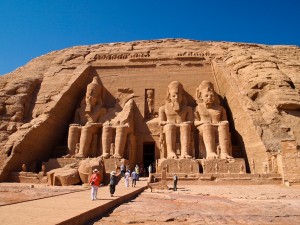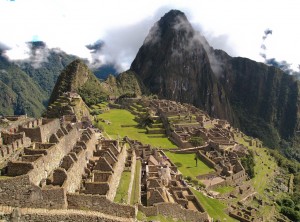UNESCO World Heritage turns forty

The mammoth temple complex of Abus Simbel, Egypt, was moved block by block and reconstructed. It’s the first project that helped found the UNESCO World Heritage Convention // (c) GTH & Nathan DePetris
In 1960, UNESCO’s campaigned the world over to save Egypt’s Abu Simbel from flooding by the Aswan Dam. This mammoth act of multinational cooperation galvanized the global community around heritage. France’s Culture Minister, André Malraux, said that our world “publicly proclaims [our] art as its indivisible heritage.” Over 50 countries funded half of the then $80 million cost to move the monuments out of harm’s way.
This year marks the 40th anniversary of the World Heritage Convention, one of UNESCO’s most successful programs, arguably the most powerful vehicle for heritage preservation. Adopted by virtually every nation, 188 signatories to be precise, the Convention combines the protection of both cultural and natural heritage. Since its adoption by the in 1972, the World Heritage List has grown to include 936 outstanding inscribed sites in 153 countries around the globe.
Throughout the years, the Convention has evolved to meet the needs of an increasingly sustainable and aware world: cultural landscapes, trans-boundary sites, marine heritage programs, world heritage forests, sustainable tourism, and earthen architecture have all been created to address these specific needs. Moreover, the “List of World Heritage in Danger” helps draw support for sites that are under threat from climate change, conflict, poaching, urban sprawl or other dangers.

Cloud-covered Machu Picchu is another of the treasures counted amongst UNESCO’s World Heritage inscribed sites, many of which are natural heritage // (c) GTH & Nathan DePetris
The biggest challenges the Convention faces in the coming years stem from global phenomena like population explosion, diminishing resources and climate change. These are responsible for a wide range of environmental and socio-economic pressures that pose a serious threat to World Heritage properties. Resolving the tensions between heritage conservation and the needs of the local communities concerned is yet another challenge for the coming decades.
Today, as it reaches maturity with so many sites on its List, the ultimate contribution of the UNESCO World Heritage Convention does not just go to those properties that are listed, but to the long-term protection of our planet and its resources.
Resources:
UNESCO World Heritage 40th Anniversary site
The List
GTH’s completed ‘List’
This article was originally published on GTH | Gay Travel Herald on October 25th 2012.








 Editor Marc Kassouf owns Pride Travel agency. He holds numerous travel industry certifications and has received one of the travel industry’s most prestigious awards, the WAVE TrendSetter, four times; the TrendSetter recognizes excellence and exceptional achievements of travel agencies and their executives. Kassouf sat on two board committees of the International Gay and Lesbian Travel Association, has traveled to nearly four dozen countries and has sailed on more than 60 cruises.
Editor Marc Kassouf owns Pride Travel agency. He holds numerous travel industry certifications and has received one of the travel industry’s most prestigious awards, the WAVE TrendSetter, four times; the TrendSetter recognizes excellence and exceptional achievements of travel agencies and their executives. Kassouf sat on two board committees of the International Gay and Lesbian Travel Association, has traveled to nearly four dozen countries and has sailed on more than 60 cruises.






